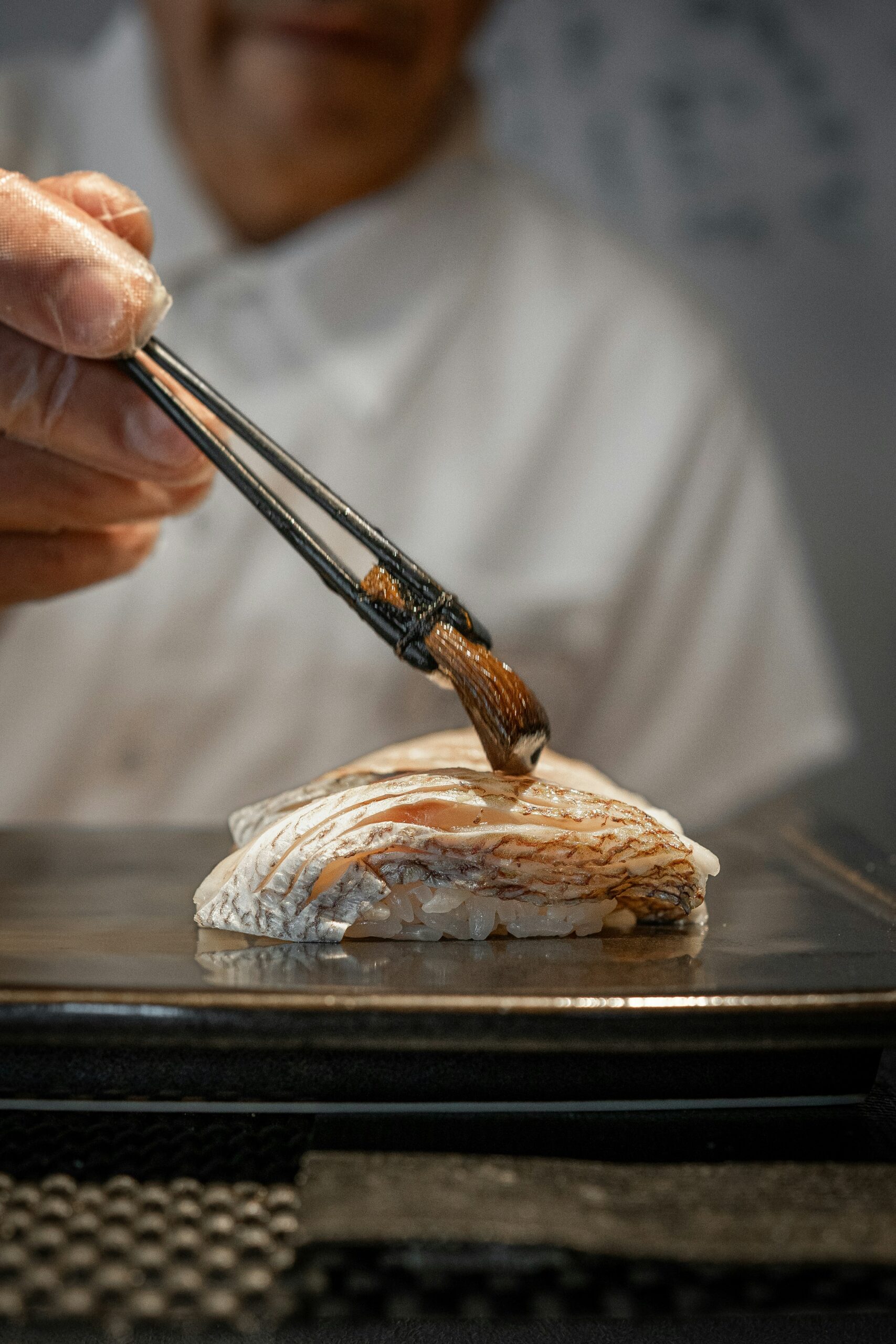Introduction to Sushi-Making
Sushi, a cherished culinary art form originating from Japan, has gained international acclaim for its unique blend of flavors, textures, and presentation. The history of sushi dates back to the 8th century when it began as a method of preserving fish in fermented rice. Over centuries, it evolved into the modern varieties we enjoy today, such as nigiri, maki, and sashimi. Each type is distinguished by its ingredients, preparation methods, and cultural significance.
Nigiri consists of hand-formed rice topped with a slice of fish or seafood, showcasing the delicate balance of flavors and freshness of the selected toppings. Maki, on the other hand, refers to sushi rolls where ingredients like fish, vegetables, and rice are wrapped in seaweed. Sushi rolls can further be categorized into various styles, including uramaki, which features rice on the outside and fillings on the inside. Sashimi, a term that often confuses newcomers to sushi-making, refers to thinly sliced raw fish served without rice, emphasizing the quality and freshness of the fish itself.
The ingredients traditionally used in sushi-making highlight the artistry involved in this cuisine. Sushi rice, vinegar, and a variety of fresh seafood are indispensable, while vegetables, avocado, and nori (seaweed) complete many rolls. To achieve authenticity in sushi, one must pay careful attention to the quality and sourcing of these ingredients. Additionally, mastering the techniques of sushi preparation—such as proper rice cooking, fish slicing, and rolling—requires practice and skill.
To embark on the sushi-making journey, specific equipment is essential, including a bamboo mat for rolling, a sharp sushi knife for slicing fish, and rice cookers for perfecting sushi rice. By understanding these foundational elements, anyone can appreciate the cultural significance of sushi and begin crafting their delicious variations at home.
Essential Ingredients and Tools for Sushi-Making
Sushi-making is an art that requires a number of essential ingredients and tools to ensure an authentic and delicious result. The foundation of sushi lies in high-quality sushi rice. Typically, short-grain Japonica rice is ideal due to its sticky texture when cooked, which helps in the formation of rolls. When selecting sushi rice, it is crucial to look for polished grains, which are often labeled as “sushi rice” in specialty stores. The rice should be rinsed thoroughly before cooking to remove excess starch.
Accompanying the rice, nori, or seaweed, plays a pivotal role in traditional sushi rolls. Good-quality nori should be bright green in color and crisp. When purchasing nori, opt for sheets that are void of holes or discoloration, as this will ensure a better rolling experience and taste. Fresh fish is another cornerstone of sushi preparation, with options such as tuna, salmon, and eel being popular choices. It is advisable to purchase sushi-grade fish from reputable vendors or fish markets, ensuring that the product is fresh and safe for raw consumption.
In addition to fish, fresh vegetables like cucumber, avocado, and carrots can enhance the flavor and texture of your sushi. These ingredients should be firm and free of blemishes. Condiments such as soy sauce, wasabi, and pickled ginger are essential for complementing the delicate flavors of sushi.
Equipping yourself with the right tools is just as important as sourcing quality ingredients. A good rice cooker will simplify the preparation of sticky sushi rice. A bamboo mat, or makisu, is essential for rolling sushi evenly and effortlessly. Moreover, a sharp sushi knife is necessary to slice your rolls cleanly, preventing squashing of the rice and ingredients during cutting. Many of these tools and ingredients can be found in Asian grocery stores or online specialty retailers, ensuring you are well-prepared for your sushi-making journey.
Step-by-Step Sushi-Making Techniques
Sushi-making is an intricate process that requires precision and attention to detail, yet it can be a rewarding activity with practice. The first step involves preparing the sushi rice, a fundamental element of any sushi dish. Rinse two cups of short-grain rice thoroughly under cold water until the water is clear. This removes excess starch and prevents the rice from becoming too sticky. Cook the rice according to your rice cooker or stove top instructions, traditionally with equal parts water. Once cooked, transfer the rice to a wooden or plastic bowl and season it with a mixture of rice vinegar, sugar, and salt—this imparts a signature flavor to the sushi rice while enhancing its sheen.
Next, focus on cutting the fish for sushi. Freshness is paramount, so opt for high-quality, sushi-grade fish. When cutting the fish, employ a sharp knife and slice against the grain, ensuring even, clean cuts that enhance both texture and taste. It is advisable to cut fish into thin pieces for nigiri and thicker strips for maki rolls. For maki, prepare a bamboo mat covered with plastic wrap; this will facilitate rolling.
To assemble maki sushi, lay a sheet of nori (seaweed) on the mat, spread an even layer of sushi rice, and leave a small border at the top. Add your chosen fillings—fish, vegetables, or other ingredients— in the center and roll using the mat, applying gentle pressure to keep the roll tight.
Shaping nigiri requires forming small balls of sushi rice and pressing a slice of fish or seafood on top. The rice should have a slight stickiness to help it hold its shape. For presentation, utilize garnishes like finely sliced vegetables or edible flowers to enhance the sushi’s aesthetic appeal. As a common mistake to avoid, ensure that the rice is not too compact, allowing for a pleasant texture in each bite.
Serving and Enjoying Your Sushi
Once your sushi has been meticulously crafted, the next step is to serve and enjoy this delightful cuisine. The presentation of sushi is as important as its preparation. A beautifully arranged platter can enhance the overall experience and visually appeal to your guests. Consider using a wooden or lacquered serving board, garnished with pickled ginger and wasabi. These elements not only add color but also complement the flavors of the sushi.
Pairing your sushi with the right sauces and beverages can elevate the tasting experience. Soy sauce is the traditional choice, providing a salty and umami-rich flavor that enhances most rolls. For those who enjoy heightened flavors, consider adding a drizzle of spicy mayo or unagi sauce for a unique twist. Beverage pairings are equally vital; chilled sake, green tea, or a light white wine can harmonize perfectly with sushi’s delicate flavors. Each option offers a different experience, ensuring that your meal is well-rounded and enjoyable.
Etiquette also plays a crucial role in the art of enjoying sushi. In traditional Japanese culture, sushi is often consumed with the hands, allowing for a more intimate connection with the food. It is polite to dip the fish side of the sushi into the soy sauce, rather than the rice side, to prevent the rice from absorbing too much sauce. Additionally, savoring each piece in one bite is considered respectful, highlighting the craftsmanship behind the sushi-making process.
Finally, do not hesitate to let your creativity flourish. Sushi-making invites experimentation with various ingredients and flavor combinations. From incorporating unconventional fillings to adapting sauces, exploring these variations can lead to delightful discoveries. Embrace the process, and allow your personal touch to shine through in each roll you create.


